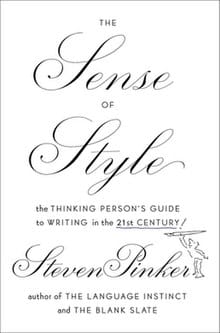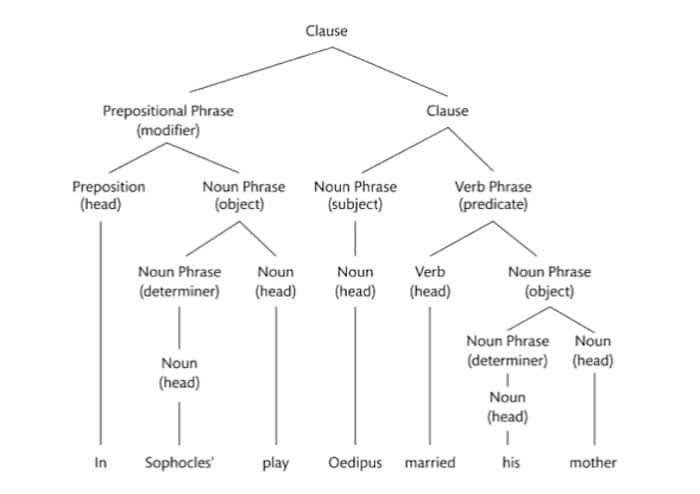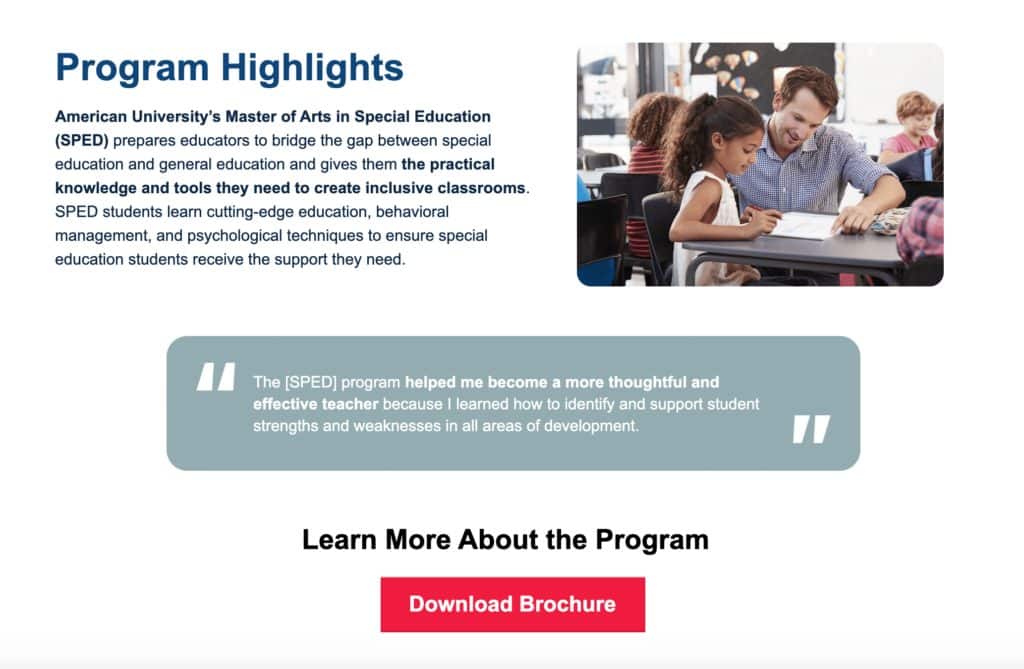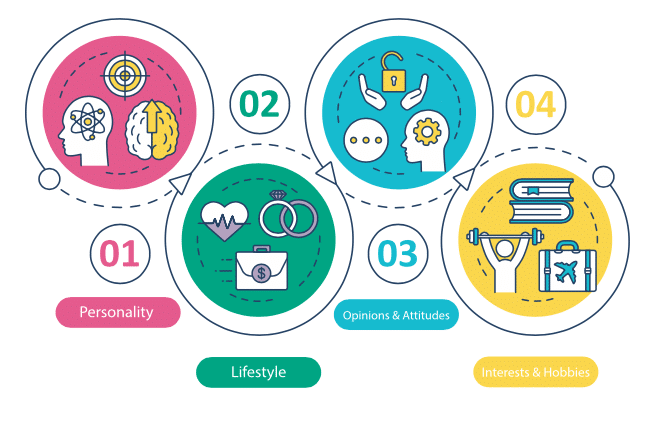How to Write Copy Like A Pro
A lot of guides out there may have you convinced that it takes some kind of innate skill to write creative copy that attracts readers. We disagree. It actually takes just three steps that anyone can complete.
Copywriting is an essential skill for marketers and advertisers to master to enhance their campaigns. A copywriter is a lucrative career in an industry that is expected to grow 8% between 2018 and 2028.
There are hundreds of writers out there, but what separates a good copywriter from a great one is the ability to write creative copy. And creativity isn’t just an internal spark within. It also requires studying writing techniques, behavioral responses, and sentence structure.
In order to write creative copy, you first need to learn the fundamentals of copywriting. Once you’ve set that foundation, you can then add the power to your punch(line).
This guide goes over 3 key steps to becoming a creative copywriter in detail, so if you’re ready to embrace your inner writer and learn how to master creative copywriting, keep reading.
Step 1: The Fundamentals of Copywriting
Before you can begin to infuse creativity into your copywriting, you must learn the basics. Let’s get into the details and answer one of the biggest questions we tend to receive about creative copywriting.What is Copywriting?
In its simplest form, copywriting is the process of writing content with a purpose, typically to persuade, inspire, or inform readers using a variety of tools, including emotional appeal, negativity and positivity, storytelling, and numerical data.
Copywriting can be used for every form of marketing you can think of, from blog posts and downloadable guides to Facebook ads and sales pages. Good copywriting can mean the difference between a page that converts readers into buyers and one that turns people off from your brand completely.
When you write poor copy, however, you run the risk of alienating and possibly confusing your readers. This is a mistake that author Steven Pinker calls “the curse of knowledge.”
The Curse of Knowledge
 In his newest book, The Sense of Style, Steven Pinker describes the curse of knowledge as the inability to explain a concept you know a lot about in a way that anyone can understand. Luckily, you can do three things to avoid making that critical mistake in your copy.
In his newest book, The Sense of Style, Steven Pinker describes the curse of knowledge as the inability to explain a concept you know a lot about in a way that anyone can understand. Luckily, you can do three things to avoid making that critical mistake in your copy.
First, delete jargon and overly complicated language from your content. To take that tip a step further, we suggest writing in the same way you speak. Then, read your copy aloud to check the way it flows and determine whether it’s also written how your target audience speaks.
If you stumble over any words or sentences, it’s a good idea to assume your readers, who likely aren’t as knowledgeable about that particular subject as you are, will stumble as well. You want to minimize the number of times your readers could potentially stumble and focus on developing a nice, even flow of words. To do this, you’ll want to employ the second tactic and put yourself into your readers’ shoes.
If you’ve done a good amount of research into your target market and its needs and wants, you should have no trouble addressing those needs in your copy. That means answering common questions, solving problems, and ensuring you provide value throughout the entire piece of content. To do that, though, you need to ensure your copy actually conveys the messages you want readers to receive. This involves the copywriting tree diagram, which we go over in the next section.
For now, let’s get into our third and final tip for avoiding the curse of knowledge. It’s pretty simple: In addition to doing all you can to put yourself into the mind of your target audience, you also want to get its input on your content. That means sharing your content before it’s published — maybe with a friend, relative, or co-worker who fits in your target audience — and getting feedback on your copy.
Doing this will help you ensure your copy is easy to read and simple enough for your audience to understand. With that being said, let’s get into that tree diagram we mentioned.
The Tree Diagram
 Steven Pinker developed a tree diagram in his book The Sense of Style. The basis of this diagram lies in the relationships between words. If you can map out exactly what each word in a sentence signifies, as well as how it relates to the words around it, you’ll be better equipped to write creative copy that convinces your readers to take action.
Steven Pinker developed a tree diagram in his book The Sense of Style. The basis of this diagram lies in the relationships between words. If you can map out exactly what each word in a sentence signifies, as well as how it relates to the words around it, you’ll be better equipped to write creative copy that convinces your readers to take action.
In the diagram, Pinker breaks down the components of the sentence “In Sophocles’ play, Oedipus married his mother.” As you can see, even a simple sentence can hold a wealth of meaning. Every single word has a purpose that contributes to the overall meaning of the sentence, and it’s your responsibility as the copywriter to know what that meaning is, as well as what your readers will perceive it to be.
The trick to doing this successfully is in your word choice. Choosing the right words to convey your meaning creates the magic that’s so heavily associated with creative copywriting. The French even developed a phrase to describe that magic: mot juste.
The Most Juste
If you’ve ever rejoiced at finding the perfect word or phrase to describe a thought or feeling to someone, you’ve experienced the mot juste. As the tree diagram illustrates, every word in copywriting plays a pivotal role in a piece of content’s ability to succeed.
That means every word you use is a mot juste when you break your content down, and the mot juste should evoke emotion in your readers. In the next step, we share examples of what that looks like.
Fundamentals of Copywriting Resources:
- Steven Pinker, The Sense of Style
- Complete Guide to Copywriting in 2019
- Write More Compelling Copy
- Copywriting Strategies
Step 2: What Is Good Copywriting? Examples of Powerful Copy
In this step, we focus on looking at real-world examples that illustrate what we learned about copywriting and “good” writing in step one. To start, let’s examine the “known-new contract” in copywriting.The Known-New Contract
You see the known-new contract all the time in copywriting, and you may not even realize it’s a strategy. It involves bringing up something your readers already know and then introducing new information.
In a piece of content, for example, this would be a group of sentences like the two above. Because of the information provided in the first sentence, you know what we’re talking about in the second sentence.
And when you including phrases like this throughout your copy, you create a roadmap for readers to follow so they don’t become lost or confused. All of that would mean nothing to your readers, however, if they don’t have a clear understanding of what to expect from your content from the very beginning.
We’re talking about a throwback to every high school English paper ever written: the thesis statement.
Reintroduction of the Thesis Statement
As is the case with high school English papers, the most successful copywriting features a creative thesis statement. The purpose of this statement is to let your readers know what to expect from the content they’re about to consume.
Thesis statements most commonly appear at the beginning of copy, but including them at the beginning of each section has also been shown to increase the amount of time people stay engaged.
This is because the statement serves as the proverbial “you are here” sign for readers making their way through your content. The thesis statement also prepares readers’ minds to receive the various appeals to emotion that tend to be evident in good copy.
Logos, Pathos, and Ethos
The philosopher Aristotle determined there are three methods of persuasion: logos, pathos, and ethos. Logos refers to logical arguments that appeal to people’s sense of truth with tools such as numbers, statistics, and proven facts.
Think scientific journals and new studies that have uncovered groundbreaking information. Ethos refers to arguments that focus on credibility and character.
In practice, this method of persuasion tends to rely more on likability and authority to convince your audience that you can be trusted. Pathos takes this a step further and appeals to people’s emotions, relying on their sense of right and wrong to convince your audience to take a certain action.
Interwoven through all of these methods, though, is an underlying reason for your writing. You need to understand your reason before you start writing. If you do, you’ll stand a better chance of correctly employing content development methods and getting your readers to do what you want.
Let’s dig into that a little more.
Understanding the “Why” of Good Stories
 We mentioned earlier that stories are a good copywriting tool — and there’s a big reason for that. The “why” behind your copywriting informs the “why” of every other aspect of your copy. It’s what sets you apart from competitors, and it’s what gives your copy the power to persuade your readers.
We mentioned earlier that stories are a good copywriting tool — and there’s a big reason for that. The “why” behind your copywriting informs the “why” of every other aspect of your copy. It’s what sets you apart from competitors, and it’s what gives your copy the power to persuade your readers.
Your “why” is, in a sense, your mission statement come to life, which is why having a well-crafted one is so critical to creative copywriting.
Our team at Archer Education developed this Facebook Ad for American University’s School of Education. We thought carefully of the “why” that prospective students would have to receive a masters degree in education and wrote copy that would pull at a prospective students logos, ethos and pathos.
Write Copy that Converts
Another area where good copywriting can make or break a marketing or advertising campaign is on the landing page. The landing page is where a prospective customer goes before they make their final decision to convert.
This is your chance to showcase your product, program or service with intentional, eye-catching and appealing copy.
For example, our team developed landing page copy for our client’s online programs. For American University’s online Master of Arts in Special Education, we knew we needed to develop copy that would evoke an emotional response to prospective students.
In our copy, we highlighted what students have to gain from the program, what benefit they can make on the world, and how AU’s program prepares them to do that.

Good Copywriting Resources:
- Ethos Pathos Logos in Copy
- 3 Big Things to Know About your Character
- What do you Characters Want
- What Makes a Hero
- Star Wars and the Hero’s Journey
- Steve Jobs on Values of Apple
- Find Your Why: How to Draft a Why Statement
- Simon Sinek on the Golden Circle
Step 3: How to Write a Mission Statement
In this third step, we look at how to write mission statements and how this process relates to your target audience.To begin, let’s go over best practices for writing effective mission statements that allow your creative copywriting skills to grow.
Best Practices for Writing Effective Mission Statements

There are many best practices for writing effective mission statements, but the biggest one has to do with how your mission statement relates to your target audience. Your mission statement is a message to the world that declares your purpose and the reasoning behind it.
To be effective, your mission statement should be precise and inspiring, and it should speak to your target audience in a way that other businesses don’t.
Your mission statement should be unique, concise and direct, and convey a sense of urgency to your reader. In order to understand your reader’s wants and goals, you need to define your target audience. That requires something called a “persona.” Here’s how to put one together.
How to Write a Persona
We’ve said this before, and we’ll say it again: Your audience is everything. If you don’t know who your audience is, what it wants, and what its problems are, you’ll have no way of knowing whether your copywriting — and therefore your content — is effective.
Developing a persona isn’t difficult, but it can take time. It requires you to do a significant amount of research into the group of individuals you would like to target, including talking with members of that group.
Social media and networking events are great ways to get to know members of your target audience and put a face to the characterization you’ve developed — a persona, if you will.
 You can also use tactics such as quizzes and questionnaires to develop a deeper understanding of those individuals based on the data you collect. This data is called psychographics.
You can also use tactics such as quizzes and questionnaires to develop a deeper understanding of those individuals based on the data you collect. This data is called psychographics.
Psychographics
Psychographics aren’t new in the world of creative copywriting. In fact, the word is just a fancy way of saying reliable, quantifiable data. Unlike demographics — which focus on quantitative traits, such as gender, age, and income — psychographics focus on qualitative traits, such as thoughts, feelings, opinions, and beliefs.
Mission Statement Resources:
It's Your Turn to Get Creative
No matter how little experience you have with creative copywriting, you can still develop copy that converts casual readers into avid fans. It takes just three simple steps.Are you ready to take those steps but afraid to do it alone? We’re happy to help! Contact us or visit our Branding tactics page and we’ll guide you through the secrets of copywriting each step of the way.



